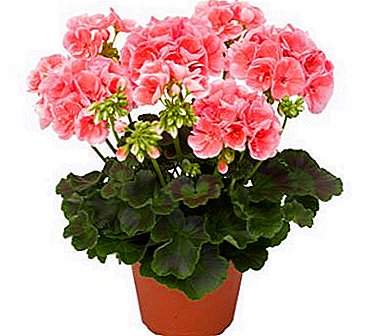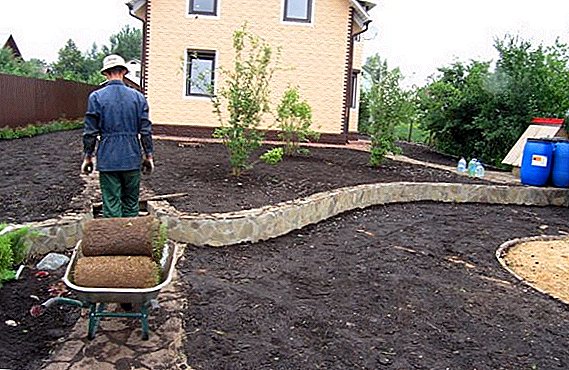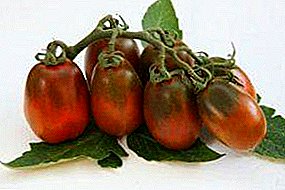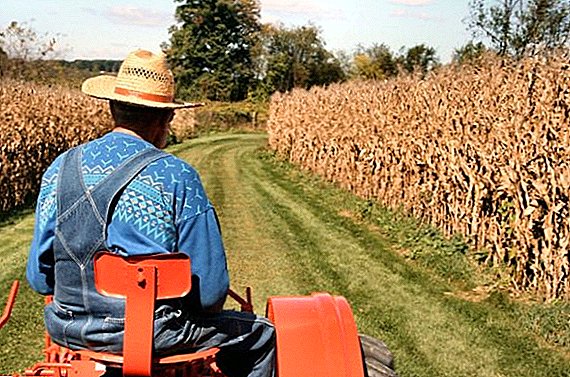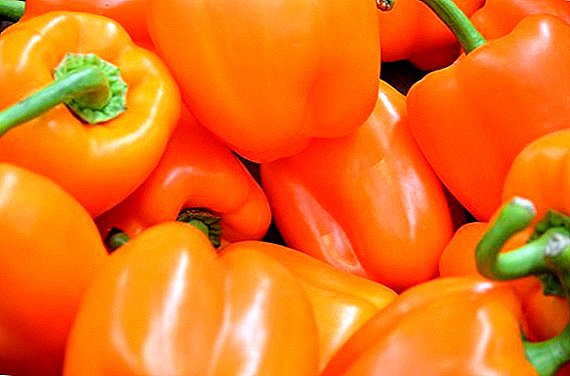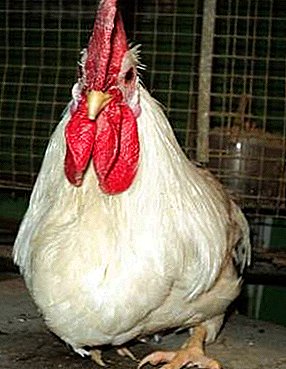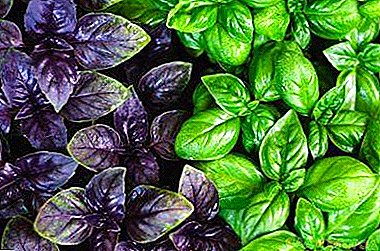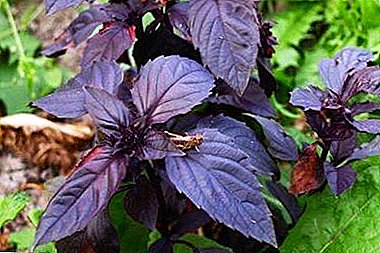
Purple basil in ancient times was called the royal grass. And this is no accident, because this useful plant was used by folk healers to treat various diseases.
The beneficial properties of basil are due to its unique vitamin and mineral composition. And thanks to the spicy aroma and taste, this plant has been widely used in cooking.
Further we will tell all about a basil, than it is useful and harmful to an organism. We will also tell how it grows and how to use it properly, why sometimes the leaves of the plant become green.
What is it and how is it different from green?
Green variety - sweetish, softer, fresher. In her taste there are notes of licorice and cloves. The most common variety is sweet or Ligurian basil. This spice is used in many Mediterranean recipes.
Purple basil has a bright, rich flavor with a hint of bitterness. It is used in cooking in Asian countries and in the Caucasus. Dense stems are used in canning vegetables, and foliage and shoots are used as a spice for various hot, cold dishes and drinks.
Methods of cultivation and peculiarities of basil care for different varieties and shades are almost the same.
By their chemical composition and benefits to the human body, green and purple spice differ. So, purple varieties are much more often used for medicinal purposes. Both species have a positive effect on:
- digestive system;
- cardiovascular system;
- skin and hair condition;
- immune system.
Types and varieties: description with photo
Below you can find photos and descriptions of different varieties of basil, including red. Among the varieties of purple basil are the following:
Ordinary
Low-growing variety. An adult plant rarely grows above 50 centimeters. It is grown on beds or indoors in pots. The leaves have a pleasant aroma with a hint of cloves. It is used in any form as part of various marinades, salad dressings and hot dishes.

Yerevan
Demanded yield variety. During the same season, several harvests have been harvested from this plant. The leaves have a tart taste with hints of allspice. Perfect for soups, salads, meats and sauces.

Red
A variety bred by breeders half a century ago. It has a pronounced spicy aroma. Suitable for growing at home on the windowsill and in the open field. It is used as a supplement to dressings and marinades.

Sacred
A variety widely spread in Indian cuisine. It has a mild spicy taste. In India, used for sacred rituals.

Osmin
The southern variety, has a mint flavor, is used as a spice for meat, fish dishes and drinks. This type of basil loves warmth, so it grows better at home.

Useful properties and composition
Now about the benefits to the body, harm and contraindications of different varieties of basil, including red. The pronounced pleasant smell of the plant is due to the presence of an essential oil of complex composition in its foliage and shoots. The concentration of oil in different varieties is from 0.3 to 1.5 percent. The chemical composition contains the following substances:
- Zineol.
- Eugenol.
- Tannins.
- Otsimen.
- Linalool.
- Camphor.
- Methylhavinol.
- Sour saponin.
- Phytoncides
- Glycosides.
- Sahara.
The following vitamins are present in basil leaves:
- Vitamin C.
- Carotene.
- Rutin
- Vitamin K.
- Folic acid.
- Vitamin E.
- A nicotinic acid.
Due to its rich chemical composition, basil is an effective anti-inflammatory, antibacterial and tonic remedy. Useful spices hypotonics, with a breakdown, as it raises blood pressure.
Harm and contraindications
The use of basil is limited to a number of contraindications:
 Low blood clotting.
Low blood clotting.- Postinfarction condition.
- Thrombosis of blood vessels.
- Hypertension.
- Any pathology of the cardiovascular system.
- Pregnancy, as basil can cause an increase in pressure and tachycardia.
Even in the absence of these contraindications, basil should be taken in reasonable doses. In case of excessive use, intoxication of the body is possible.
Application
In cooking: where to add fresh leaves?
Purple basil is widely used in cooking. It is preferable to use fresh leaves, which are finely chopped or torn by hand and added to food. You can also use dried or frozen spice. What do basil eat with? Spice is suitable for cooking:
- Lamb, beef.
- Seafood.
- Salads.
- Drinks.
- Canned vegetables.
In cosmetology
Basil is used in cosmetology for the preparation of masks and hair care products, skin, nails. The compounds comprising this plant have the following advantages:
- Relieve inflammation on the skin.
- Improve microcirculation in the cells of the epidermis and scalp.
- Resist premature aging.
- Have antibacterial properties.
- Remove redness and age spots.
- With regular use, improve the overall condition of the skin, hair and nails.
In masks and care products, the plant itself is used, as well as ready-made basil essential oils.
Planting and growing
Seeds in the open ground
It is possible to sow basil seeds in the open land only in mid-May, when there is no threat of night frost. The plant loves sunlight, fertile and fertilized soil.
For landing it is recommended to choose cloudy or overcast weather. It is important to ensure regular watering and fertilizing. With this method of growing grass grows slowly, and the harvest will have to wait a long time.
How to grow with seedlings?
 Sow seeds for seedlings begin in April.
Sow seeds for seedlings begin in April.
- First, the nutrient soil is prepared, which can be bought in stores. It is important that the earth be light and loose, let in air and moisture.
- Seeds do not dig deep - just a little sprinkled with earth. Germination will not take long.
- As soon as the first leaves appear, you can swoop down.
- When the weather is warm, the seedlings are planted in the garden.
This method will yield much faster than when grown from seed.
Care
Care for seedlings easy. It is enough to observe the mode of irrigation and periodically loosen the ground. You also need to feed basil fertilizers monthly. When the inflorescences appear, they are best removed, at the expense of what the bush will grow in breadth.
Diseases and problems
Basil is resistant to pathogenic microorganisms, but sometimes it can affect such diseases:
- Fusarium
- Gray rot.
- Blackleg.
- Defeat aphids.
Why does it turn green?
Many are interested in the answer to the question of why violet basil sometimes turns green. If suddenly purple basil begins to acquire green shades, or new greenish leaves appear, you need to pay attention to the conditions of detention. Most likely, the plant does not have enough sunlight. In this case, you need to transplant it to a more illuminated area.
How to store?
You can save basil so that it does not lose its taste and healing properties in the following ways:
- In the refrigerator - a short period of time (up to 2 weeks).
- Drying in natural conditions: to dry in a dry, warm place, without direct sunlight.
- Freeze.
Basil is an aromatic spicy plant that can enhance the taste of various dishes and drinks. Growing and caring for this grass will not cause much trouble, and its consumption in food will provide the body with a large number of useful substances.


 Low blood clotting.
Low blood clotting.
